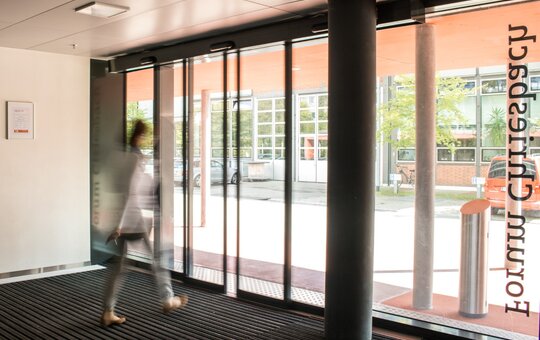When it comes to managing physical security for commercial properties, organisations often face a choice between on-premise security systems and cloud-based solutions.
On-Premise Security: An on-premise solution, also known as on-prem security, is housed within the physical building where security systems are installed. This setup involves physical servers or digital video recorders capturing and storing data from security cameras, access control systems, sensors, and alarms, all transmitted over an internal network. Security personnel review and analyse the data on monitors located on-site.
Cloud-Based Security: In contrast, cloud security systems capture and store sensitive data from the same security sources but house them in a secure data center located in the cloud. The data is transmitted over the Internet. Security teams can access this data via the Internet and review it on various fixed and mobile devices, whether on-site or remotely.
Now, let’s delve into a more detailed comparison between these two approaches to help you decide which solution best suits your needs.
Infrastructure: On-premise solutions require physical infrastructure within the building, including servers, software to manage the infrastructure, and an internal network to connect security components.
Cloud security systems, on the other hand, do not require any physical servers or infrastructure on-site. The storage and management systems are hosted in the cloud environment, typically managed by a third-party. This approach eliminates the need for an internal network, as data is directly transmitted from the security source to the cloud via the Internet.
Management and Maintenance: With on-premise solutions, the business is responsible for managing and maintaining the infrastructure. This usually falls under the purview of the IT team, requiring skills to manage both the infrastructure and internal networks. Regular maintenance is essential to ensure reliable operation.
On the other hand, when using cloud-based security, the hosting company handles management and maintenance, with the cost included in the regular subscription. Skilled specialists manage and maintain the cloud infrastructure.
Connectivity: On-premise systems require the installation and maintenance of a secure internal data network to connect storage devices to security and access control components. This network must have sufficient speed, capacity, and traffic prioritisation to transmit high volumes of data, such as high-resolution video images, without delays or loss of image quality.
Cloud security systems, on the other hand, transmit data from security devices via public or private Internet connections. While the Internet can handle large file sizes generated by security cameras, transmission speeds and image quality depend on the type of Internet connection and traffic conditions on the public network.
Storage Capacity: On-premise storage devices have finite storage capacity, determined by the number of cameras and other connected security components, as well as the volume of data generated. When this capacity is exceeded, security teams must either add new storage devices or delete unnecessary data.
Cloud security systems, in contrast, offer infinite storage capacity, though individual storage limits are initially determined by the subscription type. Additional feeds or exceeding limits may require an increased subscription. Businesses can develop a tiered storage strategy to reduce subscription costs by storing non-essential data in a lower-cost archive cloud system.
Reliability: On-premise solutions depend on the reliability of internal components to maximize uptime. This requires selecting servers, recorders, and network components with high levels of reliability. Implementing redundancy at the device and network levels can minimize disruption to data flows.
Cloud-based security relies on the reliability of external elements, such as the Internet and the host system. Private Internet solutions can reduce the risk of delay or disruption, albeit with additional costs. Cloud providers aim for high reliability levels, but it’s crucial to verify the level of uptime offered in service contracts.
Disaster Recovery: In the event of a disaster damaging the on-premise infrastructure, security continuity may be severely impacted. In such cases, setting up an alternative system in a temporary location can be time-consuming and challenging.
For cloud-based storage, a disaster on the business premises does not result in a loss of service or access to stored data. However, damage to critical cameras or security devices may disrupt current feeds. Cloud infrastructure remains unaffected by local issues, allowing security staff to access cloud data from any location via internet-connected mobile devices to continue monitoring security.
Control and Compliance: On-premise storage gives security teams complete control over data, enabling them to apply necessary policies for maximum protection. This level of control is essential for compliance with industry regulations or contractual requirements for protecting sensitive information.
Storing data in the cloud may not be permissible under certain regulations or contractual requirements. In such cases, businesses should verify the compliance of their chosen cloud storage solution.
Security Monitoring: On-premise security systems require security personnel to view and analyze data on-site monitors. For 24/7 monitoring, staff may need to be on-site outside normal business hours.
Cloud-based security allows security teams to access feeds and data from any location using internet-connected devices, offering increased operational flexibility. Businesses with multiple sites can centralize monitoring operations with feeds from all sites stored in the cloud and accessible from a central monitoring post or any convenient location.
Conclusion: Choosing between on-premise and cloud-based video surveillance and CCTV systems involves careful consideration of infrastructure, management, maintenance, connectivity, storage capacity, reliability, disaster recovery, control, compliance, and security monitoring. Each approach has its strengths and weaknesses, and your decision should align with your specific security needs, operational requirements, and regulatory considerations. Consulting with security experts can help you make an informed choice that best suits your organisation’s unique security landscape.








